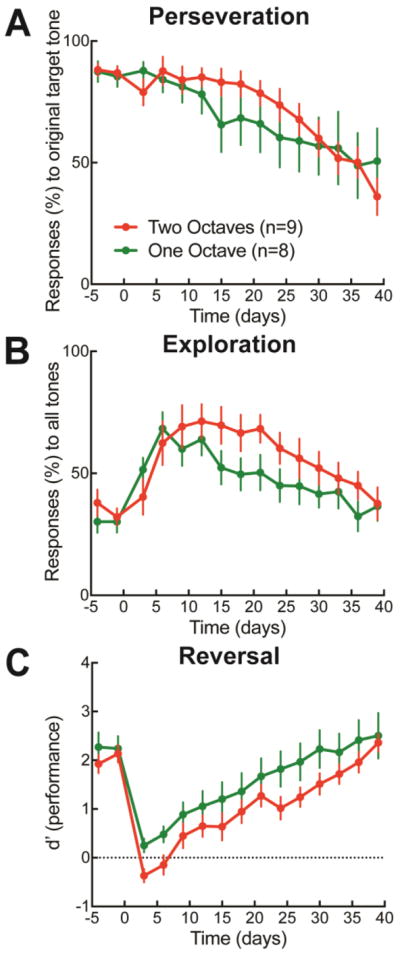Figure 2.

Reversal learning phases across one or two octaves. A, ‘Perseveration’ was quantified as responses (%) to the original target tone during the baseline training (days −5 to 0) and after the rewarded tone had been changed (over second week days 8–15). Animals had similar rates of perseveration whether the new target tone differed from the original target tone by two octaves (red symbols, 84.4±2.8% false alarm responses to 4 kHz over week two after reversal, N=9) or one octave (green symbols, 75.3±4.9% responses to 4 kHz, N=8, p>0.2 compared to two-octave perseveration rate, Student’s unpaired two-tailed t-test with Bonferroni correction for multiple comparisons). B, ’Exploratory’ responses (%) to all tones. Animals that reversed to a tone two-octaves separated from the original target-tone had higher rates of exploration than those reversed to a tone one-octave separated (two-octave exploration on second week after reversal: 70.7±4.3%, one-octave: 57.9±3.8%, p<0.05, Student’s unpaired two-tailed t-test with Bonferroni correction for multiple comparisons). C, Performance (d’) on the auditory go/no-go task across baseline and reversal. Animals reversed to a tone that differed by one-octave had higher d’ values than those that were reversed to a tone differing by two-octaves (two-octave d’ on second week after reversal: 0.6± 0.1, one-octave d’: 1.0±0.2, p<0.05, Student’s unpaired two-tailed t-test with Bonferroni correction for multiple comparisons).
